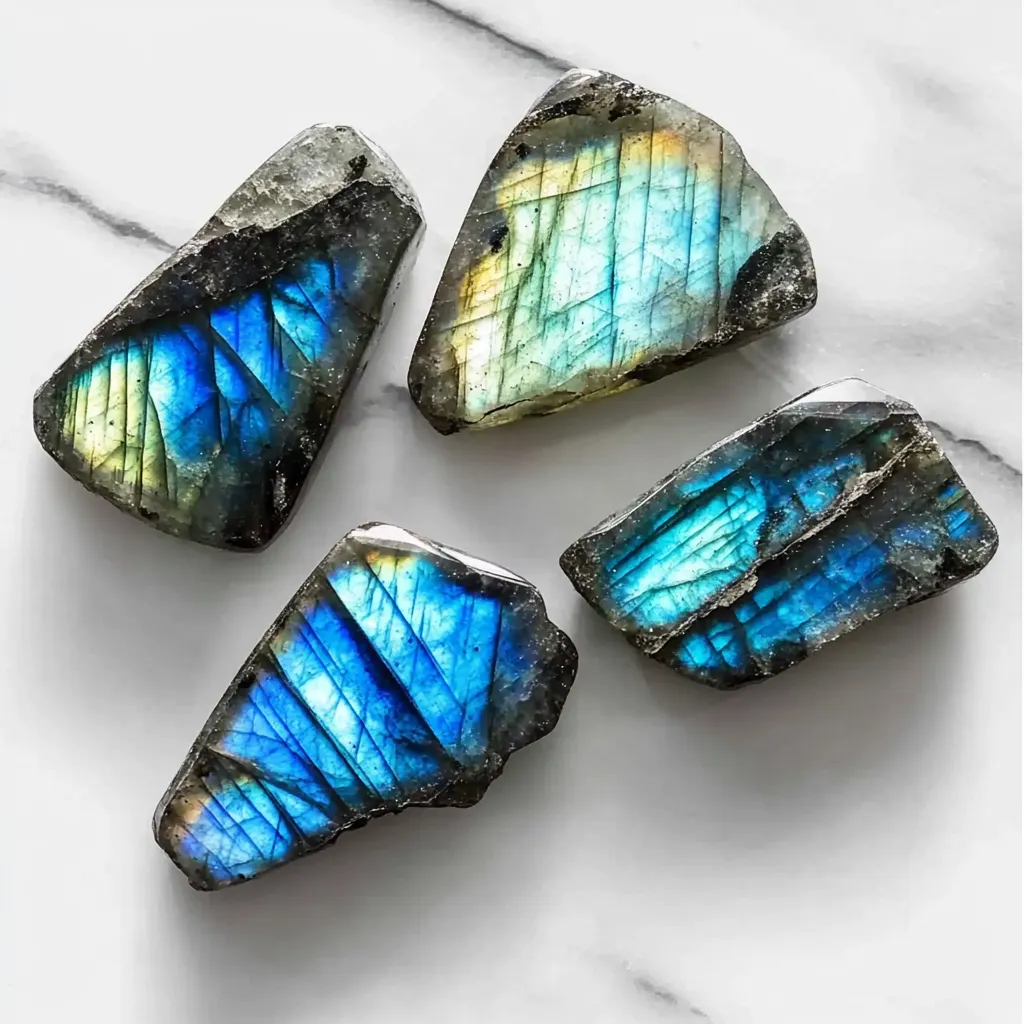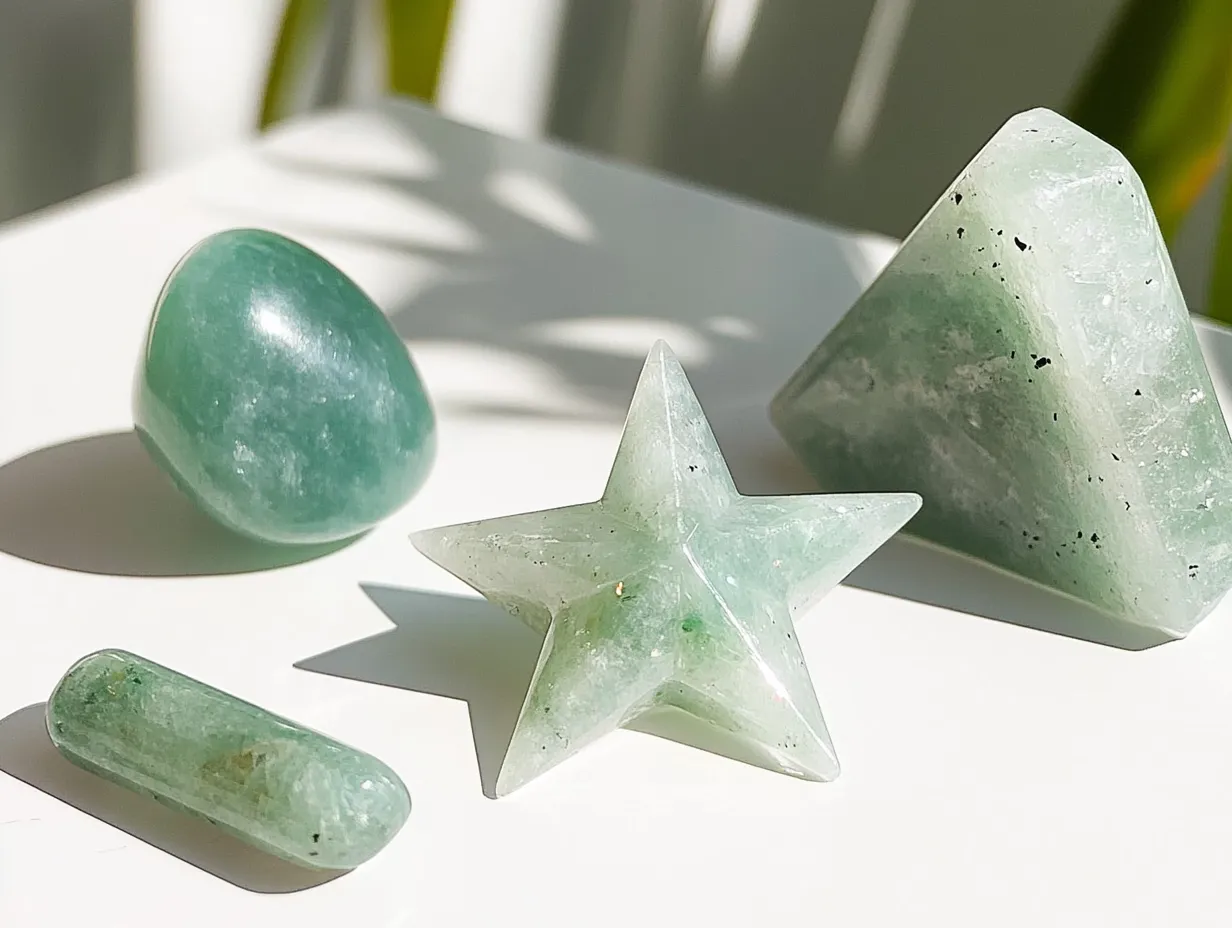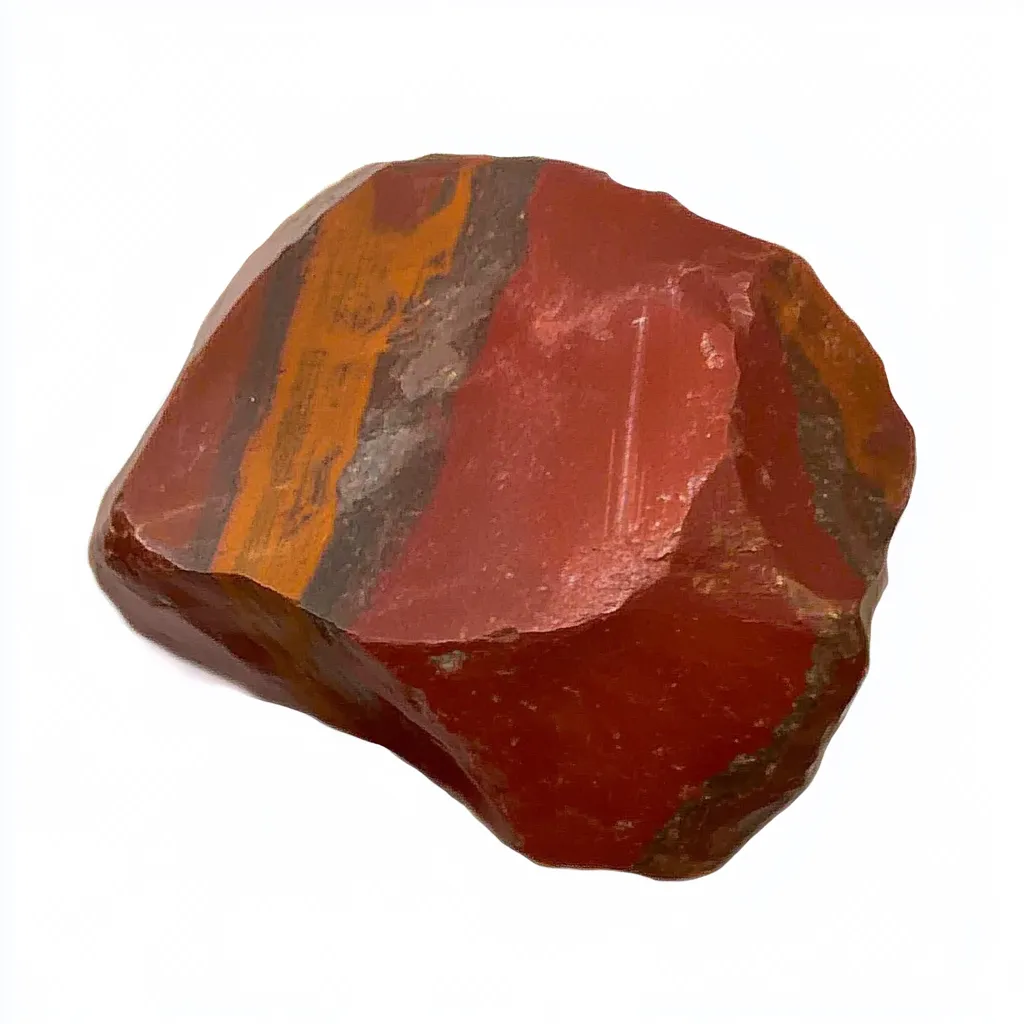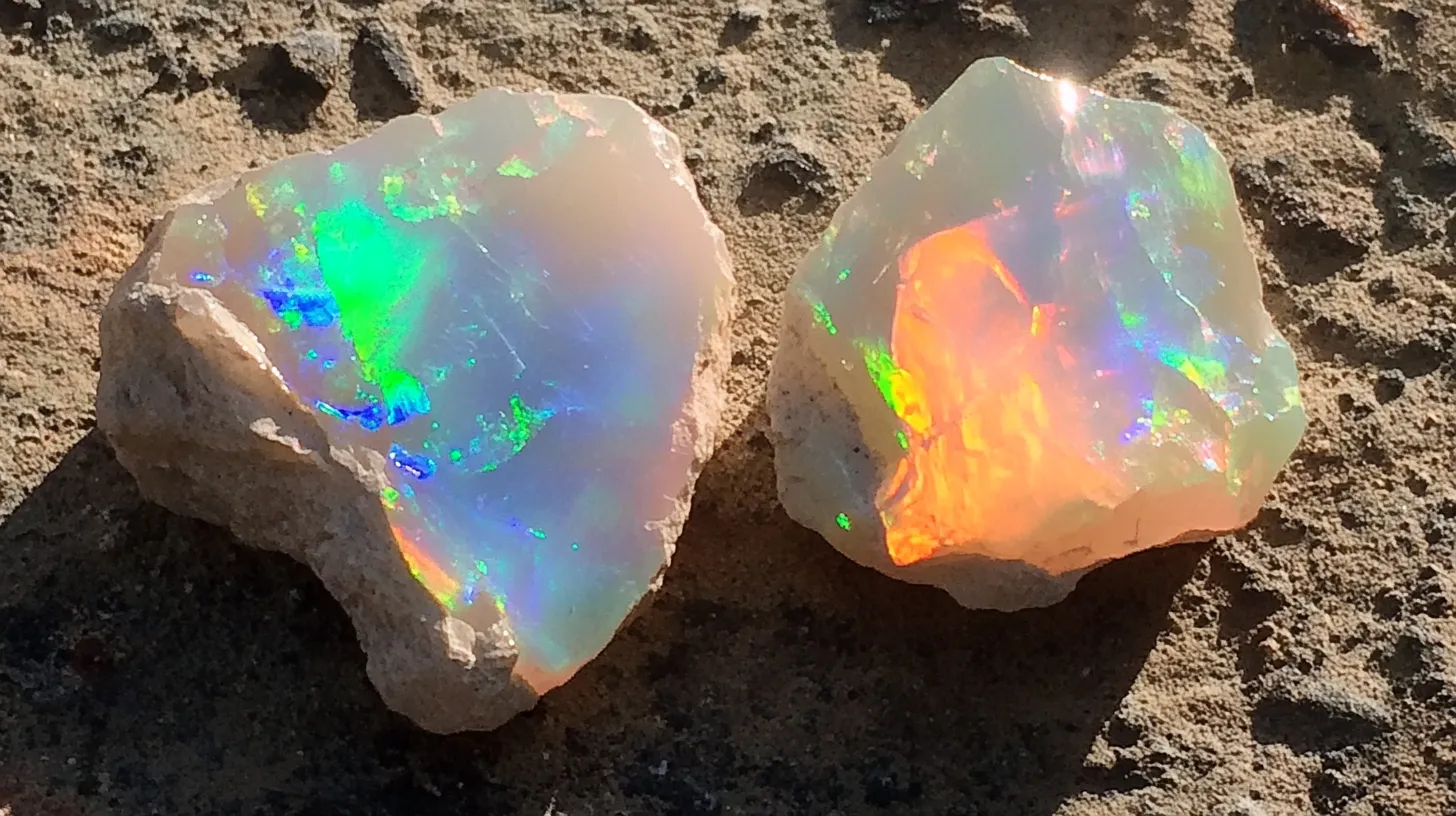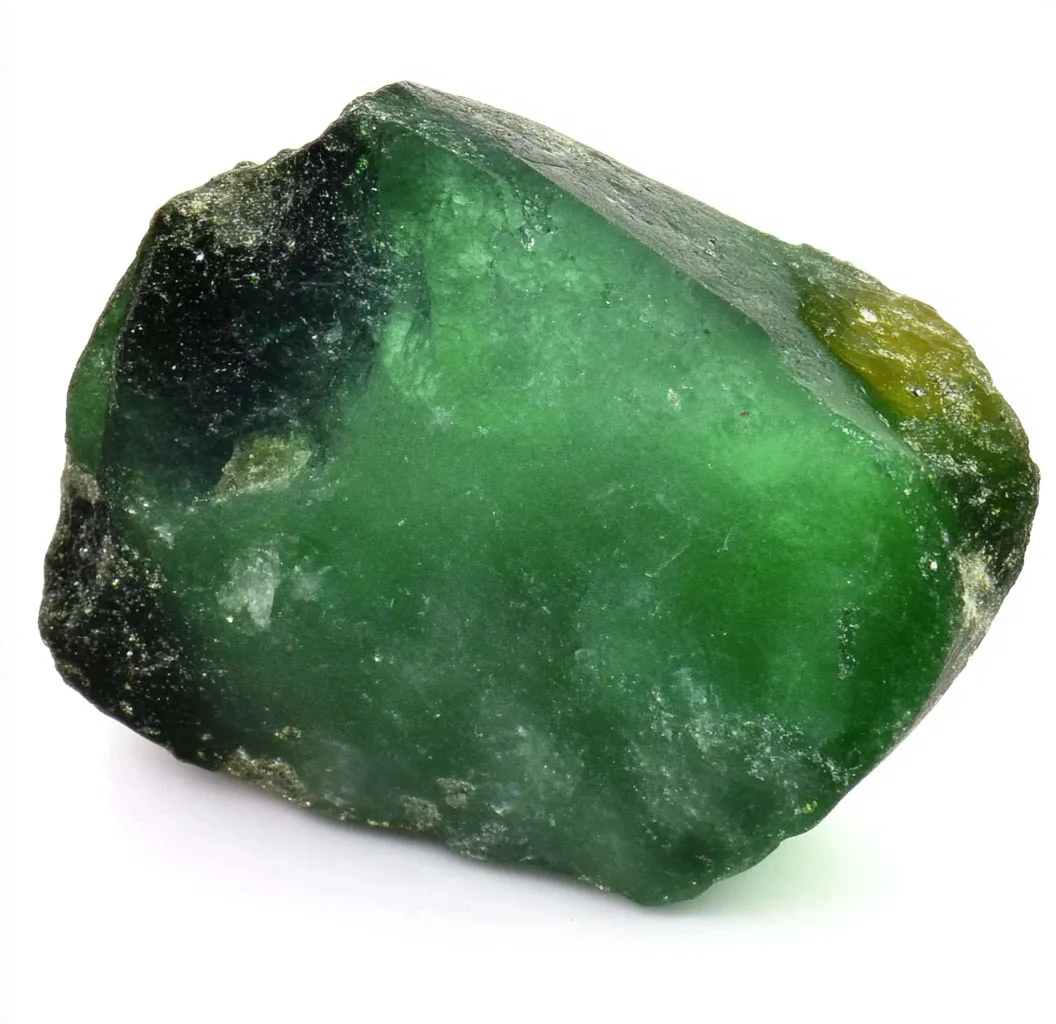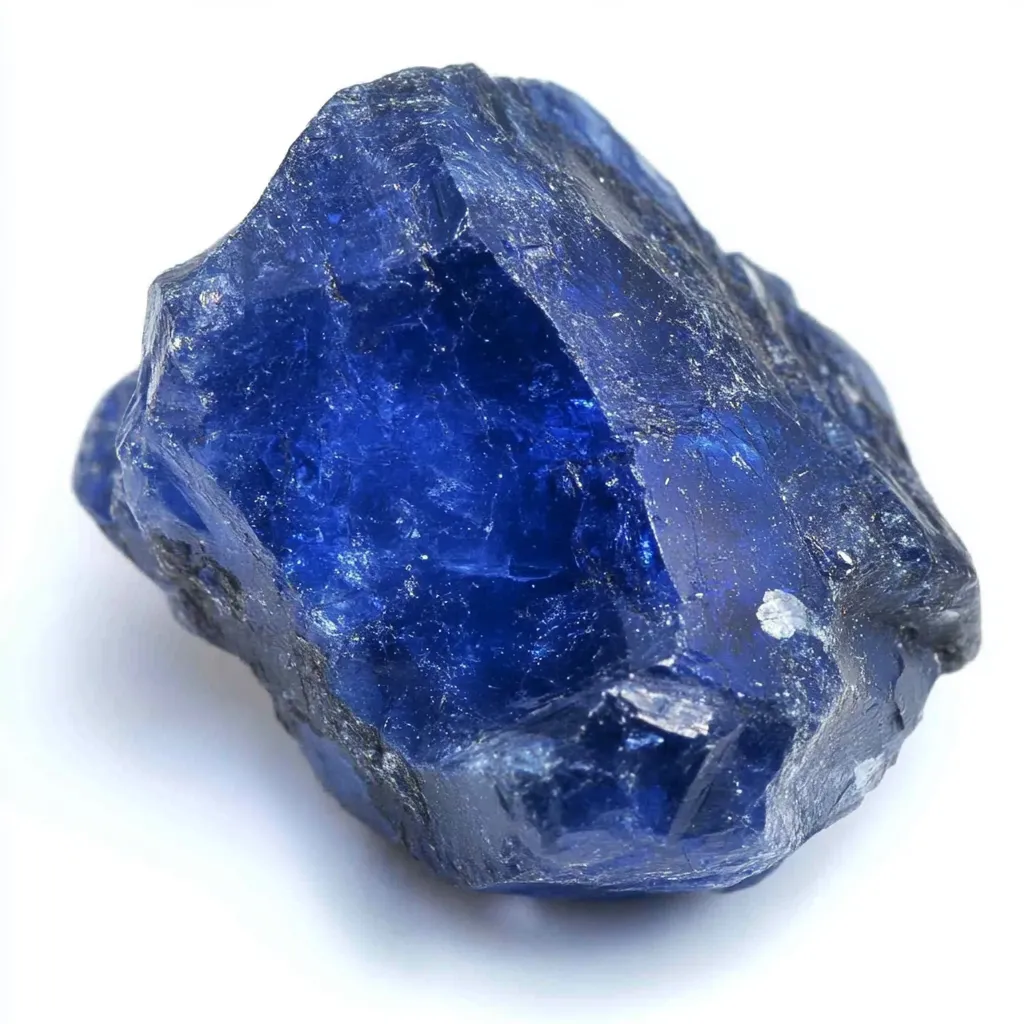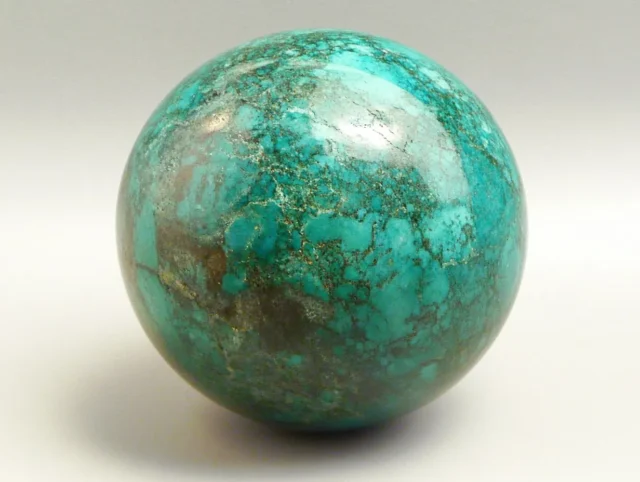
What Is Malachite Stone?
Malachite is a standout green copper carbonate mineral known for its vibrant color and swirling patterns. It is found in such places as the Democratic Republic of Congo, Russia, and Australia. It forms in the oxidized zones of copper deposits. Its rich green bands make it instantly recognizable and highly sought after, both for pennies and for decorative purposes and for crystal healing.
Some gemstones are see-through and have many angles, like a finely wrought crystal. But malachite isn’t one of those gemstones. It is not at all clear. Its surface can look as though it’s been polished to the max, but for malachite, that’s not much, because it doesn’t hold a shine that could wow you. In fact, if you had seen a malachite bead yesterday, just an hour after I had set it behind glass for the photo you see today, it would have looked quite different. Awfully different. Malachite is not toxic in its stable form. Its crystalline structure is quite stable, and your body is not going to break down malachite into toxic bits. However, when you get malachite carving for whatever decorative purpose—think art deco, or plain old chess set—you have pieces that have been worked and so that they could be pieces of art. They could look like natural logs you’ve hollowed out. Now, here’s a truth: That is a piece of art that could poison you.
Shapes & Forms of Malachite Stone
Malachite exists in numerous natural and processed forms. The most typical are botryoidal (grape-like) clusters, fibrous masses, and stalactitic forms. These raw formations, when polished, reveal stunning concentric circles and banded layers in shades of green from mint to forest. Each stone is like a small landscape.
| Malachite Form | Description |
|---|---|
| Botryoidal Clusters | Grape-like shapes, common in natural malachite |
| Fibrous Masses | Thread-like textures often polished for display |
| Stalactitic Forms | Formed in cave-like structures, revealing layered patterns when cut |
| Polished Cabochons | Smooth domed shapes used in jewelry |
| Spheres & Pendants | Fashioned into accessories and spiritual objects |
Often, you will find malachite carved into oval cabochons, spheres, or geometric pendants in jewelry. Malachite is also used for inlays in furniture, watch faces, and even whole tabletops. Some collectors only want to show off specimens of raw malachite, though, for the way its unpolished outer layer contrasts with its polished interior.
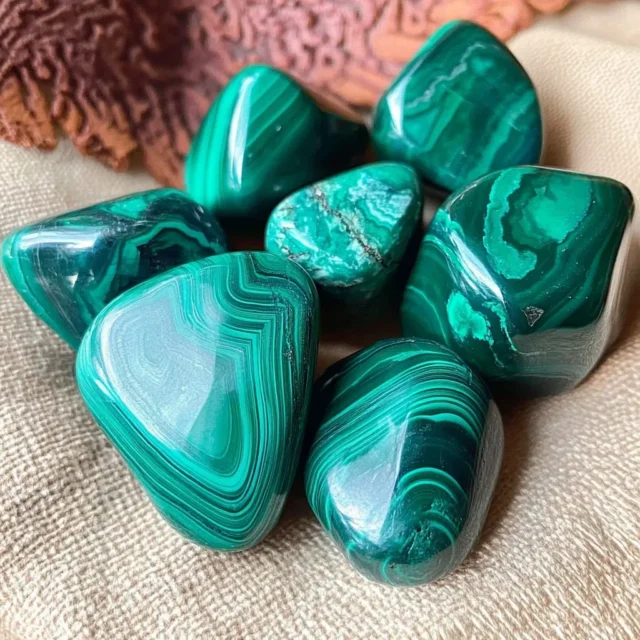
Malachite stone’s metaphysical properties and benefits
Malachite has always been recognized as a stone that helps with transformation. According to legend, it absorbs all negative energy, making it a popular stone for emotional healing and protection. Some users even wear it, viewing it as a form of spiritual armor.
| Metaphysical Property | Believed Benefit |
|---|---|
| Emotional Healing | Absorbs negativity and supports inner peace |
| Heart Chakra Connection | Aids in processing grief and fostering love |
| Transformation Support | Encourages growth, even if uncomfortable |
| Spiritual Armor | Worn to deflect harmful energies and emotional toxicity |
In terms of energy, malachite is very much connected to the heart chakra. It helps people process grief, open up to love, and break toxic cycles. Many crystal healers advise it for folks going through major life changes or interrogating themselves for clarity about difficult situations. An intriguing note: malachite is an “active” stone, meaning it doesn’t just sit there quietly. Some people say it almost pushes the kind of growth that’s a little uncomfortable—like a mentor who tells you what you need to hear.
Malachite Stone Meanings in Ancient Lore and History
In ancient Egypt, malachite was held in much higher regard than just as a decorative item—it was revered as sacred. The Egyptians ground it into eye paint for use on and in the eyes, serving a dual purpose of both protection and beauty. The mineral was associated with the goddess Hathor in all her forms: as a joy-giving, beautiful deity; as a miner and craftswoman; and as the figure who guided the dead through the afterlife. Even the innards of the tomb were sometimes painted with malachite green to symbolize life’s renewal in the afterlife.
The Greeks and Romans believed in the protective effects of malachite, especially for children. Soldiers took it into battle as a protective talisman, and sailors used it to command stormy seas. During the Middle Ages, people carved malachite into amulets that were thought to ward off the “evil eye”—a belief that still echoes in modern folklore.
At present, while the scientific world removes itself from any claims of a metaphysical nature, collectors and healers alike still find themselves enchanted by malachite. Whether you’re attracted to this awesome stone for its beauty, marvelling at that moment when sufficient light brings forth its truly spectacular shades of green, or whether you revere it for that half-mythical place in human history that has seen it move from antiquity into the modern age, it’s clear: this stunning mineral not only has some remarkable tales associated with it but also seems to vibrate with quite a lot of energy.
Malachite Stone and Birthstone
Malachite has deep, earthy hues and mesmerizing green swirls. And while it’s not one of the standard birthstones, malachite is compelling in what it does. It’s revered not just for beauty but also for energetic properties that make it a wonder when it comes to healing. It’s good for assisting with heart energy, and even for someone like me with a wonderful Taurus, malachite’s energy is quite potent. It is not in any way just a lovely green stone. It is a green stone that, in making itself lovely, emits a ton of healing energy.
Why? Malachite is known for its ability to amplify one’s emotions, foster transformation, and act as a shield against negativity – traits that are often beneficial to these bold and grounded signs of the zodiac. It’s like a green guardian, keeping us in touch with our deepest feelings while also making us grow and changing us for the better and, in Malachite’s case, the greener.
Guide to Cleanse Malachite Stone
Malachite is a copper-based mineral, meaning it’s sensitive to water and harsh cleansing methods. Therefore, if you are considering running it under a tap or soaking it overnight, please refrain from doing so. This stone requires gentle care.
To clean malachite without risk, use one of the following methods:
| Cleansing Method | Description |
|---|---|
| Smoke Cleansing | Use sage or palo santo to gently pass smoke over the stone. |
| Moonlight Bathing | Leave the stone under full moonlight overnight for gentle energetic reset. |
| Sound Vibration | Use a singing bowl or tuning fork for vibrational cleansing. |
| Crystal Assistance | Place on selenite plate or quartz cluster to passively cleanse the stone. |
I, too, enjoy placing my stone on a selenite slab overnight. It feels almost like the stone is resting and resetting. But whatever you do, don’t base your cleansing method in salt or water — those two elements can damage the surface of your stone and leave it looking dull.
A Guide to Charging Malachite Stone
Rejuvenating malachite is akin to infusing it with new energy. Yet, one must not forget, the stone vibrates with an existence that is already full of potent energy; therefore, doing less with it may yield more powerful results. The most impactful method I know to re-energize this stone is to use it as a focal point during an intentional meditation session.
Grasp the stone and concentrate on your heart chakra. Visualize green energy pulsating in and out of the malachite. Or you can position it next to a plant or tree and let the grounding, healing vibrations of nature wash over the stone. One of my favorite ways to work with this stone is to nestle it next to a plant that I adore, a plant that has already become an ally in my healing journey, and watch (or sense) the energy shift and amplify.
| Charging Method | Description |
|---|---|
| Meditation | Hold stone while focusing on the heart chakra during a quiet session. |
| Nature-Based Charging | Place near a tree or beloved plant to absorb grounding energy. |
| Crystal Grid Integration | Use within intentional grids designed for protection or transformation. |
It is wonderful to use crystal grids when charging malachite, especially those that are protective or transformative. With everything, the critical element when using a grid is intentionality.
The Significance of Malachite Stone in Tarot
Although malachite is not directly related to the tarot, its symbolism matches enough cards to warrant mention. This is especially true given that the set of cards features three archetypes that are particularly transformative. I am speaking, of course, about The Tower, Death, and The Empress. Malachite’s metaphysical traits are about transformation, and those cards are about life’s big changes. They also happen to be about the kind of nurturing, healing process that makes life’s difficult changes truly transformative.
For example, when giving readings of tarot cards, I frequently place a malachite stone nearby when interpreting cards associated with emotional shifts and personal growth. Interpreting in its presence seems to support my clarity and courage in delivering the querent’s necessary truths. If you are a reader, try placing malachite with you when giving yourself a reading. You might be astounded by its depth.
Malachite Stone and Zodiac
In astrological terms, malachite aligns best with Taurus, Capricorn, and Scorpio. Each of these signs gains from the stone’s grounding yet transformative properties, although they interact with the stone’s energy in varied ways.
Malachite promotes progress and transformation, and it does so in a way that respects and maintains Taurus’s inherent need for stability and security.
It is a sign that is capable of sweetening the strict nature of Capricorn. It allows for the development of a more relaxed and open emotional personality that is not so uptight and concerned with preserving boundaries and rules.
Scorpio: Malachite provides equilibrium for this profoundly emotional sign — a nugget of advice to control energy without inhibiting it.
Malachite can assist anyone seeking clarity in their emotions, energy protection, and transformation. It’s almost like carrying a little piece of Earth that says, “You’ve got this!”
Questions and Answers
Extra Insights on Malachite
Green Malachite
Malachite is one of the most distinguishable healing crystals. It is known for its bright green color, which is banded like a tree or a wave in the ocean. I’ve worked with crystals for years and consider Malachite to be the one that best exemplifies nature’s art, as if it were painted with a brush. People say that this copper-rich mineral absorbs negative energy and enhances the vibes surrounding it. This suggests that it functions as an emotional cleanse in the form of a stone.
Malachite Appearance and Energetic Qualities
| Property | Description |
|---|---|
| Color | Bright green with banded patterns |
| Energetic Benefit | Absorbs negative energy, provides emotional cleansing |
| Common Forms | Raw chunks, polished stones, carvings |
| Elemental Association | Earth |
Chrysocolla Malachite
Chrysocolla Malachite is the tranquil energy of chrysocolla with the powerful grounding properties of malachite. Together, they create not only a visually stunning mineral (think Earth’s colors as seen from space) but also one that helps balance communication and emotional release. Chrysocolla Malachite can be thought of as a gentle guide for when you’re overwhelmed but still need to express yourself with the kind of unfiltered sincerity that, more often than not, serves as the cornerstone of effective communication.
Malachite and Chrysocolla
When malachite and chrysocolla form together in nature, the result is more than merely beautiful—it is deeply symbolic. The green tones of malachite offer protection and transformation; the blue of chrysocolla encourages clarity and inner peace. Together, they make a potent dual-force crystal for anyone attempting to work through either emotional healing or creative blocks. No wonder both healers and artists often seek this combination.
Velvet Malachite
Velvet Malachite gets its name from its soft, almost fuzzy surface texture. But surface intrigue doesn’t account for this formation’s delicate nature and energetic sensitivity, which is the opposite of what you encounter with polished malachite. When you first hold one, it almost surprises you with how warm and nearly lifelike it feels. Because of this, people particularly value velvet malachite for meditation, as it fosters a near-mindful moment with the material.
Comparison Between Velvet and Polished Malachite
| Type | Texture | Common Use | Sensory Experience |
|---|---|---|---|
| Velvet Malachite | Soft, velvety | Meditation | Warm, lifelike |
| Polished Malachite | Smooth, reflective | Display, jewelry | Cool, solid, visually intense |
Azurite Malachite Meaning
The meaning of Azurite Malachite is strongly related to transformation and insight. Azurite is renowned for its ability to activate the third eye, but it is malachite’s heart-centered strength that makes Azurite Malachite one of our top recommended stones for emotional processing and spiritual growth.
This is a perfect stone for journaling, truth-telling, shadow work, or any kind of honest conversation with oneself.
Malachite Rocks
Malachite rock takes form in so many different ways—from gleaming polished stones to great, lumpy natural formations—that it’s impossible to define just one look for it. When you talk about malachite, you can talk about very, very different things, visually. That makes it a really interesting mineral to collect. It appears in everything from colorfully painted totems for African tribal rituals to carved, curvaceous showroom pieces for contemporary design (the first photo in this gallery is a malachite totem from Africa; the second, a malachite-esque showroom design piece from an art installation in Paris, 2011).
Chrysocolla in Malachite
When malachite contains chrysocolla, the result is often a breathtaking stone that combines both physical and emotional healing. This formation can be compared to a gemstone symphony—calming, grounding, and incredibly supportive. It’s not uncommon for these stones to be used in jewelry, especially pendants worn near the heart chakra to help release emotional tension.
Raw Malachite Stone
Malachite’s untampered form is filled with potency. When left in its natural state, not only is malachite keeping its real shape, but it’s also resonating as it’s meant to. You’ll get that along with a visual experience when you see pieces of malachite that are in their natural forms. They’re somewhat mind-blowing in their beauty and visual richness. And in my experience, visually rich crystals are also filled with energy.

